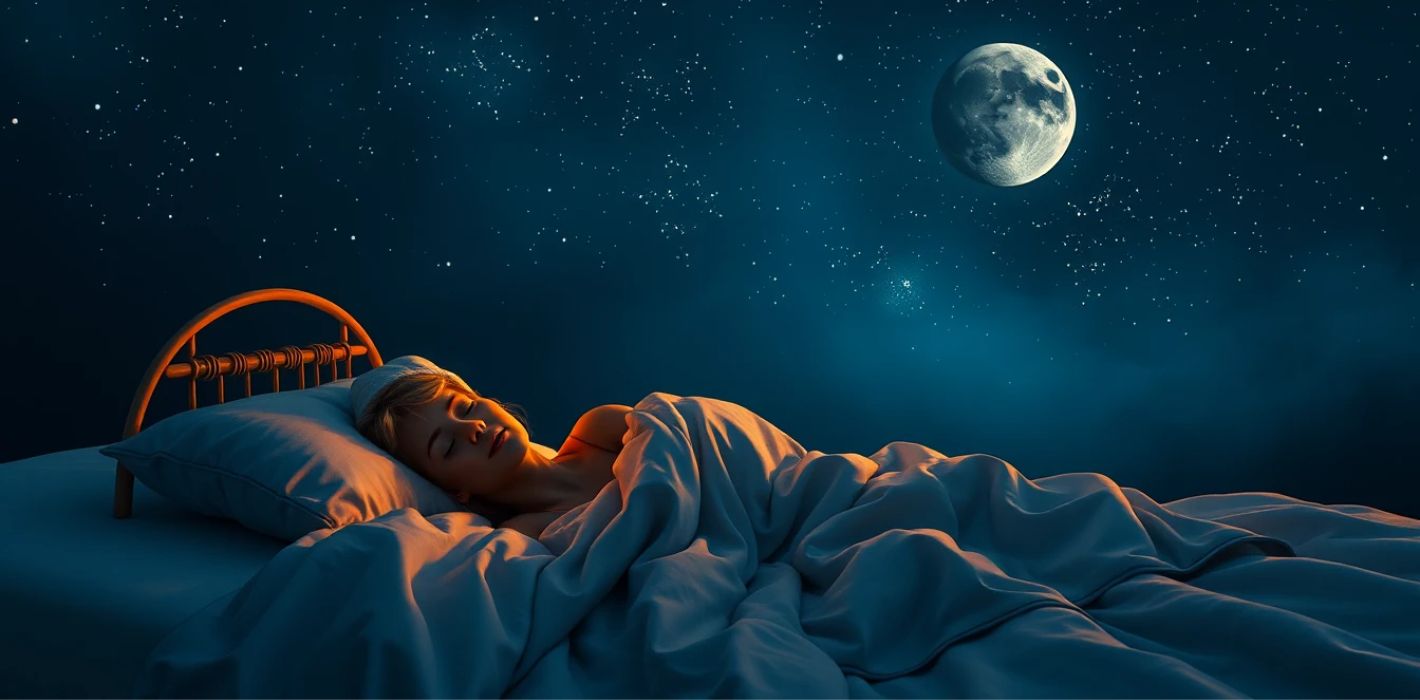%20(12).png)
- NeuroFable is an AI-powered dream recorder that captures REM sleep brainwaves and turns them into 3-act short films.
- It uses advanced neural mapping and generative storytelling AI to interpret your dreams.
- Think of it as bedtime meets blockbuster, powered by neuroscience and generative storytelling.
NeuroFable: The Startup Turning Your Dreams Into Oscar-Worthy Stories
Picture this: You wake up in the morning with that weird dream still lingering—something about alien hamsters, your high school crush, and a haunted vending machine. Just as you're trying to piece it together, you get a notification: “Your dream is ready.”
You hit play.
Cue a deep, soulful narrator voice—not Morgan Freeman, but eerily in the style of him—gently guiding you through your own subconscious adventure like it’s the opening of The Shawshank Redemption.
That’s NeuroFable—a startup that’s not just reimagining sleep tech, but literally turning your dreams into 3-act movies, complete with emotional arcs and dramatic narration.
And yeah, it’s exactly as surreal—and oddly moving—as it sounds.
What the Heck Is NeuroFable?
NeuroFable is a brain-computer interface (BCI) company that combines neuroscience, AI storytelling, and synthetic narration to transform your dreams into cinematic short films. We're not talking dream “interpretation” like your aunt’s astrology app—this is visual, audible storytelling.
Here's how it works:
- You wear a sleek headband while you sleep.
- During REM sleep, the device reads neural activity using non-invasive EEG.
- AI kicks in: interpreting dream data, structuring it into a story format, and generating visuals.
- Finally, a synthetic narrator voice—designed to mimic the warmth and gravitas of Morgan Freeman—delivers your dream as if it's an award-winning film.
The Sci-Fi Science Behind It
NeuroFable’s hardware is paired with software that’s borderline sorcery. Here’s what’s under the hood:
- EEG-based REM detection to target the most vivid dream cycles
- Generative AI models trained on dream journals, cinematic plots, and cognitive storytelling frameworks
- Image generation networks (like diffusion models) that create visual dreamscapes based on neural patterns
- A synthetic narrator model trained to speak with that same comforting, slow-burn cadence of classic narrators—rich baritone, deliberate pacing, and poetic timing
It doesn't copy real voices, but the style is unmistakable: slow, wise, and deeply empathetic. Like your dream has a guardian angel who moonlights as a nature doc voiceover artist.
Imagining My First NeuroFable Dream
I haven’t tried NeuroFable—no one outside the team has. But I can’t stop imagining what it would feel like to wake up, grab my phone, and press play on a dream I didn’t even know I had.
What if I saw myself drifting through a foggy city made of glass, being chased by clockwork birds? The film would have music. A structure. A voice—deep and deliberate—whispering:
“In a world of shifting time, he searched not for answers—but for something he’d forgotten.”
It sounds surreal, maybe even unsettling. But that’s the point. NeuroFable isn’t just a piece of tech—it’s a reflection tool. A portal into the wild, chaotic, beautiful theater of your mind.
Even if the dream is strange—even if it’s about birds with gears—I imagine the feeling of seeing it told back to me would be… honest. Like my subconscious finally got a chance to speak in a language I could understand.
And that’s what makes NeuroFable so electrifying: it’s not about control. It’s about translation. About making the invisible part of us visible.

Tech Tool or Therapy Gateway?
NeuroFable isn’t just an entertainment novelty. It’s already getting attention from therapists, creatives, and even lucid dreamers.
Writers are using it to explore subconscious ideas. Artists are recreating dream scenes. And therapists? They’re cautiously experimenting with it to open up conversations about trauma, anxiety, and emotional patterns—without patients having to explain their dreams.
One Reddit user wrote:
“If NeuroFable actually works the way it sounds, this could change the world. The idea of watching your own dream—structured, narrated? That’s both amazing and honestly… a little terrifying. In the best way.”
That's something no Fitbit can do.
Risks, Ethics, and Weird Edges
Of course, it’s not all dreamy. NeuroFable is raising some legit questions:
- Accuracy: Sometimes the AI misreads your brain data. A dream about floating on clouds might become a skydiving thriller.
- Privacy: You're literally uploading your subconscious. NeuroFable claims full user ownership and encrypted storage, but... yeah. Still spooky.
- Synthetic Voice Dilemmas: Even if it’s not a real person’s voice, mimicking a recognizable style opens a philosophical can of worms. How far is too far?
Then there's the temptation to treat dreams as content instead of personal experiences. That line? Blurry.
What's Next for NeuroFable?
The company just scored $40 funding and is working on a “Dream Showcase” platform—like YouTube, but for dream-films. Users can share, remix, and even collaborate.
There’s also buzz about a VR integration, where you'll be able to step into your dream-film and experience it like a 3D game world.
In short: Inception might’ve been a movie. But now it’s also a roadmap.
Where Dreams and Storytelling Collide
NeuroFable is the kind of tech that makes you do a double take. It’s weird. It’s a little unsettling. But it’s also wildly creative.
It lets you rewatch a part of yourself you usually forget by breakfast—wrapped in structure, narrated in a voice that sounds like it knows your soul, and framed like a Sundance short.
It’s your subconscious... stylized.
Stay on track with more brainy breakthroughs and sci-fi reality checks at Land of Geek Magazine!
#AIStorytelling #DreamTech #SyntheticVoices #SleepToCinema #LandOfGeekTech





